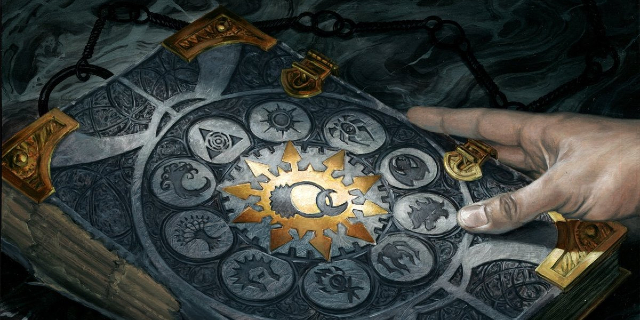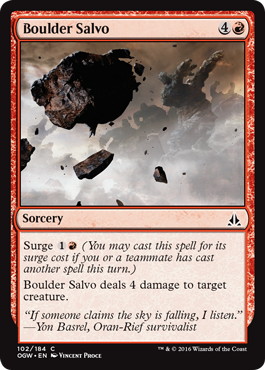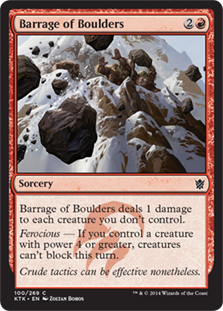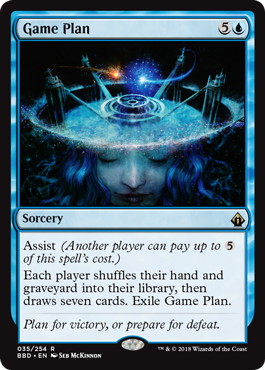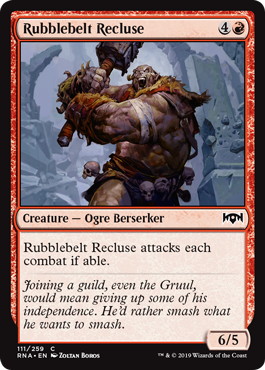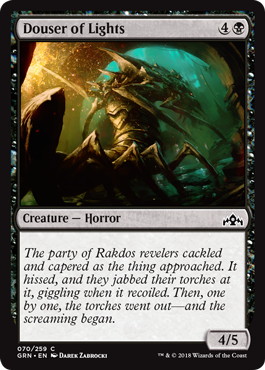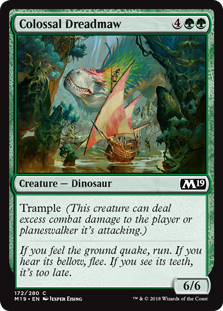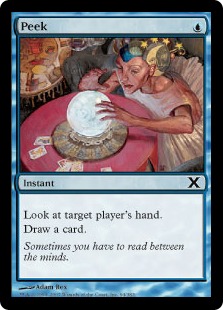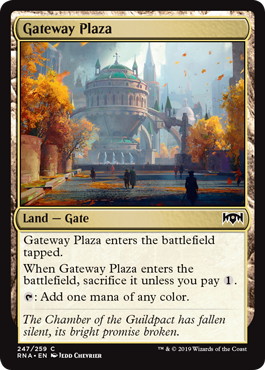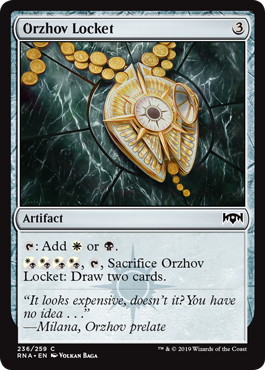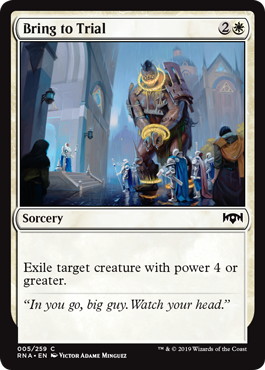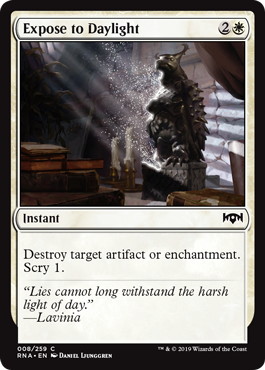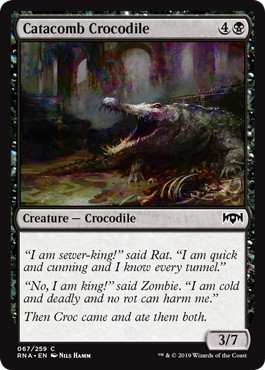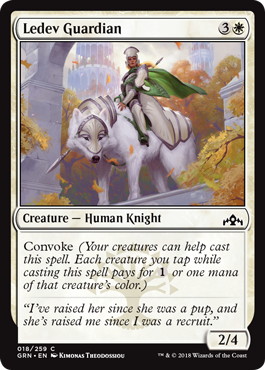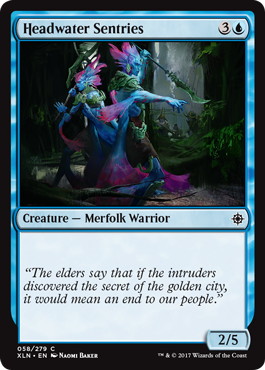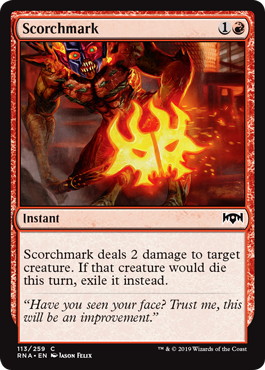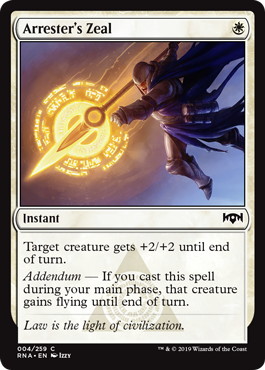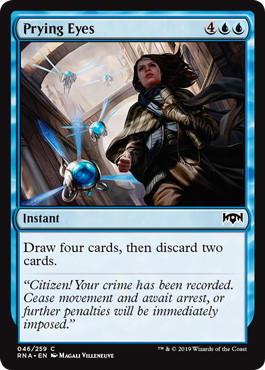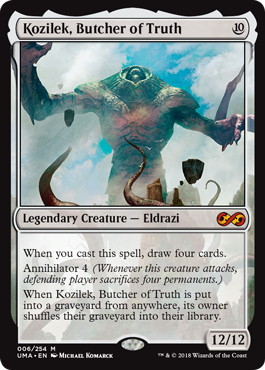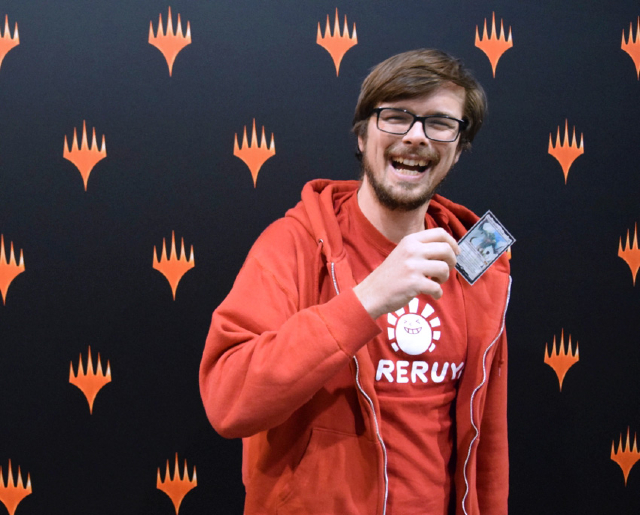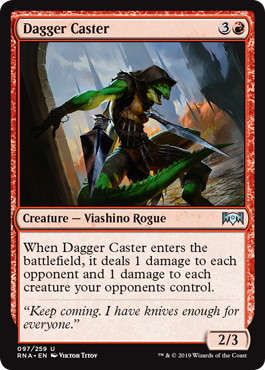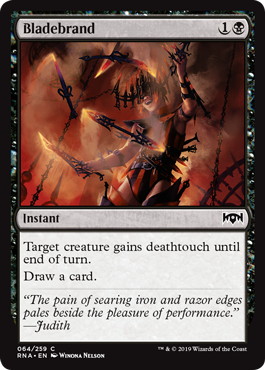My first tournaments were prereleases. After having played a couple of them, Peter Vieren and me started to print the spoiler of the new set in advance. We made sure we knew each card in the set, highlighting which instants were in the set, discussing cards we weren’t sure how good they’d actually be. This preparation made our results at the prerelease way better.
We grew out of casual gaming pretty fast, but for quite a while, these were the only tournaments we played in. And we were going to show up prepared.
I imagine the story of how you started to be the same for a lot of players. Someone teaches you the game, you buy some product, battle a bit and at some point decide to attend a prerelease. Sealed is the lowest possible entry into Magic. You don’t need anything. You just show up, get six boosters and you are ready to go. No preparation needed, no knowledge needed in advance.
I feel that for a lot of players, this view of Sealed sticks. Hardly ever do I hear someone say they didn’t prepare enough for the Sealed portion of the tournament. And that’s a pity, because preparing for Sealed is very rewarding.
Recent Tournaments
This is an overview of the last six individual Limited Grand Prix I played:
| Tournament | Sealed Record | Draft Record | Finish |
|---|---|---|---|
| Bologna 2017 (Amonkhet) |
8-1 (no byes) |
5-1 | Semifinalist |
| Warsaw 2018 (Guilds of Ravnica) |
9-0 (3 byes) |
4-1-1 | Semifinalist |
| Prague 2019 (Ultimate Masters) |
9-0 (3 byes) |
4-1-1 | Winner |
| Strasbourg 2019 (Ravnica Allegiance) |
8-1 (3 byes) |
5-1 | Quarterfinalist |
While my good Draft records helped me reach Top 8, I think my combined Sealed record (25-2 not counting byes) is truly outstanding. A huge part of my success comes from being well prepared for the Sealed portion of these tournaments.
In this article, I’ll try to give you an in-depth analysis of Sealed. This consists of both deck building and playing Sealed, and how I would advise you to prepare for both parts. I’ll try to keep it as general as possible, as I want to help you build a foundation which can be applied beyond just one set.
Metagame
When talking about deckbuilding, I need to explain the term ‘metagame’ first.
Specifically in Magic, the metagame is often seen as the whole group of available strategies within the context of the game and format. When people talk about the ‘expected metagame’ in Magic, they’ll be talking about what decks they expect other people to bring to a certain tournament. A ‘metagame analysis’ is a breakdown of what decks people actually brought to a tournament.
In general game theory, metagaming includes any possible games about the actual game, mostly used as ways to get an advantage in the actual game. This also include a specific tactic employed to get an edge over a specific player. Metagaming can be using tactics which go beyond the supposed limits of the game, while staying within the rules. In Magic context, this would often be referred to as ‘levelling’ your opponent.
Let’s take rock-paper-scissors as an example. Imagine playing against someone you know never chooses paper. Your strategy against this specific player should be to always play rock. While only choosing rock would be a terrible strategy in general, this avalanche of rocks would work versus this player. It’s easy to see how this opponent could ‘next level’ you.
While the term metagame is often used in the context of Constructed Magic, it’s rarely applied to Limited. I’d like to argue that each and every Limited format has its own metagame. Just like in Constructed, a deck being good in one metagame doesn’t make it good in every metagame.
To build a good deck in a certain metagame, you’ll need to understand the metagame. You’ll want to have a clear answer to the following questions:
This can partly be done by an analysis of the set. But also be aware of learning about the metagame when practicing Sealed deck. Test what you think holds true regarding a metagame and be open for new insights. You don’t have to be limited to only your own findings. The internet is full of people creating content about Magic and it’s a great source of information.
Personally, I read a lot of articles. A lot of thought goes in a well-written article. If you prefer to watch streams, make sure to watch people who don’t just play the game, but explain their deeper reasoning. And make sure to watch people who are actually playing Sealed. Draft is great and more regularly played, but being good in a certain Draft format will not necessarily make you good in the same Sealed format.
Deckbuilding
If you would give a Sealed pool to five different players, you’ll get five different decks. If you’re lucky, the pool would be easy to build and they’d at least agree on the colors. Building and registering the right 40 cards is very hard. Rarely do players agree on the exact build of a Sealed pool.
Next problem: you only have a limited amount of time to build your deck. You should try to be as efficient with your time as possible. When opening the boosters you’ll play with, already try to think about deckbuilding. When you’re done registering the pool of the person sitting across from you, go back to thinking about your own cards. Think about which color combination you’ll lay out first.
When building your deck, always build something that can actually win games. Think about how games with your deck will play out. What holes does your deck have to execute this game plan? How does your deck line up against the type of decks you think are good in this format? Shortly put: what’s your plan?
A common complaint about Sealed deck is that it’s often decided by bombs. And that complaint is valid. People are underprepared for bombs. If you have a slow control deck, your opponent will have more time to find their good cards and cast them. If you’re not prepared for that, your control deck won’t work and you will lose many games to bombs. The less your own deck has a plan to execute, the more the individual power level of your opponent’s cards matter.
I’ve said it before and I’ll say it again: Sealed isn’t the same as Draft. A good Sealed deck often doesn’t look like a good draft deck in the same format. Don’t try to build something which looks like something you might draft in this format. Try to build something that can win games in this Sealed format.
An advice often given when you have a mediocre or bad pool is to build an aggressive deck. The idea is that an aggressive deck can win fast if your opponent stumbles a bit or just has a slow draw. Playing an aggressive deck also makes games shorter, which gives your opponent less chance to draw their strongest cards. I’d say you have to play an aggressive deck if it can actually win games. I believe the most successful way to salvage a bad pool, is to play a deck with too many mana sources and too many big creatures. Don’t be afraid to play stupid big creatures.
Gameplay
Limited gameplay is very often about getting little advantages left and right. Controlling the flow of the game is the best way to be able to execute your game plan. Getting your opponent on the backfoot is one way to control the game flow, but making sure the board stalls can be another. Execute a plan that fits with the plan your deck has.
Playing Limited matches themselves is something you’ll learn best by playing as many as possible. Playing your own Sealed deck as much as possible will also give you a more complete understanding of its strengths and weaknesses. If you’ve ever seen me after deckbuilding or between rounds at GPs, chances are I was playing with my deck. I have the advantage of greatly enjoying just about every game I play, but this also helps me better understand the ins and outs of my own deck.
I won’t go into detail about all the things you need to focus on when playing Limited. One thing I’d like to expand on is your opponent’s behavior in the game. Behavior can be seen in several ways here. An easy example is an opponent who declines to trade damage. A less obvious example is an opponent who clearly tries to play around combat tricks. Another example might be an opponent who always plays their land after combat.
Try to think for a moment what you might gain versus these opponents. What knowledge did you gain? How can you use this to advantage for the remainder of the match?
An opponent who declines to trade damage will want the game to go longer. Their game plan involves getting into the longer game. What can you do to prevent that from happening? Maybe you ought to take a more aggressive line? Or maybe you’d like the game to last longer too. Who’s right then?
An opponent who declines to trade creatures is either afraid of a combat trick you might hold. Or maybe your opponent values their creature as worth more than yours. Figure out why that would be the case. Does your opponent has a specific plan for that creature? Or maybe a good answer for yours? If an opponent shows a tendency to play around combat tricks, make use of that. Imagine how’d you play with a certain trick in hand. How would you play with this card in hand? Convince your opponent you have it.
If your opponent always plays their land after combat, what does it tell you if they play it precombat at some point in the third game?
There are a lot of little things your opponent might do which can give you an advantage. Make the best use of them. Small advantages add up. Everything your opponent does, gives you more knowledge about the game and the opponent. Use it to defeat them.
Sideboarding
I think sideboarding is where I gain my biggest edge in Sealed. Your sideboard in Sealed is bigger than it is in any other format. Sideboarding in Sealed is like deckbuilding all over. Differences are that you know what you’re playing against and you only have three minutes. Be prepared for this.
I’ll divide sideboarding in three categories: large, medium and small.
Large
Large sideboarding is changing your entire deck. This is something you’ll often prepare in advance or between rounds. You can build entirely different decks with your pool. You hopefully registered the one able to win the most games, but the other one might be very good against either very slow or very fast decks.
If you prepare a second deck like this, make sure to have it sleeved in your deck box, preferably in the same sleeves as your main deck. Try to swap both decks smoothly, so your opponent doesn’t notice.
Building a second deck and swapping the main deck with the backup deck is something I see happening every now and then, and have done myself as well. What people often forget when doing this, is sideboarding after switching decks. You didn’t build your second deck to defeat your opponent’s deck. You build it because you thought it could be useful in certain situations and to have quick access to it. But you’ll still want to sideboard with your new deck against this specific opponent.
I’ll also add that large sideboarding can also be done after the second game. Imagine a first game which is fairly grindy, but you felt like your deck was ahead, so you only made some small changes. In the second game, you see your opponent changed their deck to be way more controllish and way more over the top of yours. Now for game three, you might want to bring in the very aggressive deck you have in your sideboard.
Medium
What I’ll call medium sideboarding comes down to changing your gameplan. This can be done by changing only a couple of cards, but you can easily end up changing ten cards as well. Note that this doesn’t only apply to Sealed, but can often be done in Draft as well.
Adapting your game plan to be able to beat your opponent’s plan isn’t always easy. It’s possible you’ll want to add cards you’d never considering playing in the first place. Maybe you’ll need to cut some removal. Maybe counterspells are the strongest possible cards in the matchup. Maybe the bomb rare you’re splashing for isn’t worth it because your opponent is either way too aggressive or has a lot of removal to deal with it anyway.
Here are some general ways you can change your deck if your opponent is playing an aggressive deck:
If your opponent is presenting a slower, more midrange or control deck, here are some things to consider when sideboarding:
All in all, when medium sideboarding, your new plan should be to be slightly slower and slightly bigger than your opponent. This is harder if you were the more aggressive player in the first place. You’ll need to prepare for your opponent to add cards well-suited at beating yours. Try to focus on cards that interact well with these and avoid cards that immediately become obsolete against the right defenses.
Small
When sideboarding small, you’re not changing the core of your deck. You’re adapting to whatever your opponent was doing. Remember not losing to the bombs your opponent has? Try adding situational cards that deal with said bomb. Your opponent shows a pattern of playing around combat tricks? Consider cutting them. Your opponent tried to go for a long game? Add cards that would be good in a long game. This may also include adding answers to cards you might not have seen, but would make sense for your opponent to have, considering the way they played.
You’ll want to change cards that don’t interact good with whatever your opponent was doing for cards that interact profitably with their cards. For example, if your opponent played 《Dagger Caster》, considering cutting most, if not all, of your X/1 creatures. But also be aware it’s highly likely they also have a 《Bladebrand》 somewhere in their deck, even if you haven’t seen it yet. You might want to add a card that can disrupt this combo.
A little thing I like to do is board out combat tricks my opponent has seen. Often times, you’ll have one or two combat tricks in your deck and more in your sideboard. Swapping those in your main deck with those in your sideboard won’t change the overall strength of your deck much, but can be a very frustrating experience for your opponent.
Try to put a selection of about 10 to 15 cards you can imagine boarding in in the front of your sideboard. This will make your sideboarding go faster. Doing this between rounds will also keep you more in touch with the exact contents of your sideboard.
To wrap it up, the most important thing to do when sideboarding small is to remove useless cards. This may sound fairly obvious, but people tend to focus on which cards they want to bring in. If they don’t find cards they really want to bring in, they are not taking cards out. A good way to do this is to go through your deck first and putting cards you really want to take out aside.
Famous Last Words
In my next article I’ll try to write an in-depth guide for War of the Spark. I plan to publish this guide before Magic Fest London, which means I’ll have to make an analysis of what I expect to be the War of the Spark Sealed metagame, without having played it. It won’t be easy, but I will try to bring you something useful.
As always, hit me up on Twitter (@VierenPascal) with questions or suggestions!
Pascal Vieren


